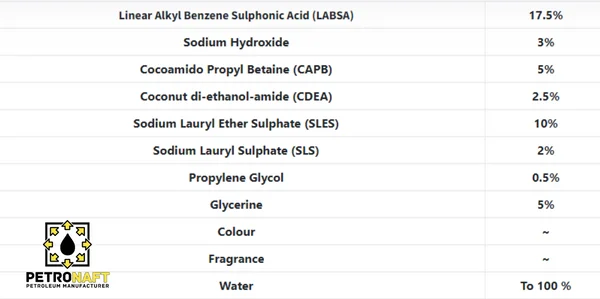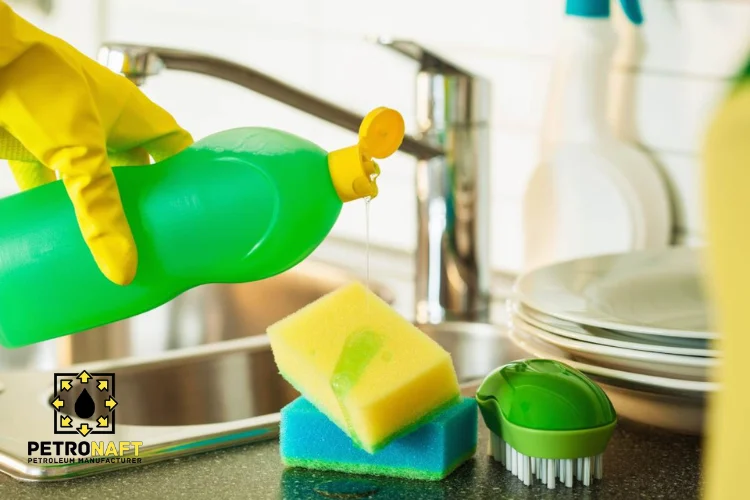Content Overview
Caustic Soda and Dishwashing Liquid: The Perfect Pairing
When it comes to making dishwashing liquid, there are many different ingredients that you can use. However, one of the most effective is caustic soda. This powerful alkali is capable of breaking down grease and grime, making it an essential component of any dishwashing liquid formula. In this article, we will take a closer look at caustic soda and how it can be used to create high-quality dishwashing liquid.
Equipment needed for the manufacture of dishwashing liquid:
- Drum/Container/Vessel (in which all materials are going to be mixed).
- Receptacle for the preparation of sodium hydroxide (Caustic Soda) solution (Lye).
- Agitator (mixer connected with a motor to mix the raw materials).
- pH meter.
- The equilibrium of mass.
Equipment Setup:
- The drum, container, or vessel has to be positioned on a surface that is horizontal.
- The agitator, or impeller, that is connected to the motor has to be placed within the container, and the distance between the agitator and the bottom of the container needs to be as short as possible for the mixing process to be successful.
Steps in the Production Process:
Since the majority of the chemicals used in general-purpose cleaners and dishwashing liquid are the same, their respective methods are also quite similar to one another. It is still necessary to get experience in pH balancing in order to complete the manufacturing process that is employed in the formulation of dish wash. The reaction of acid and base results in the formation of this substance. Therefore, it calls for some attention as well as adequate ventilation. This formulation includes several additional compounds, known as conditioners, that shield hands from the damaging effects of other chemicals.
The production of dishwashing liquid can be broken down into two distinct stages:
- Acid Neutralization
- The Inclusion of Additional Products

In the next few paragraphs, we will go through the necessary procedures for each of the following sections individually:
Neutralization of Acidity:
- To begin, transfer about one-fourth of the total water volume into a separate container, and then add the required quantity of sodium hydroxide (Caustic Soda). After giving it a few minutes’ worth of stirring, set it aside to cool down.
- While this is going on, put the remaining water in the mixing vessel and turn the engine on to stir the water.
- Put some LABSA in the water, stir it around, and wait for it to fully dissolve.
- At this point, you should begin adding the sodium hydroxide (Caustic Soda) solution to the mixing vessel. Utilize a pH meter to monitor and adjust the pH as necessary. When you reach a safe pH of between 6.5 and 7.5, you should stop.
The Inclusion of Additional Products:
Following the completion of the acid neutralization process, add the chemicals in the following order:
- Color
- Fragrance
- Glycerin
- Propylene Glycol
- Sodium lauryl sulfate (SLS)
- Sodium Lauryl Ether Sulfate (SLES)
- Coconut di-ethanol-amide (CDEA)
- Coco amido Propyl Betaine (CAPB)
A Few Hints and Pointers for the manufacture of dishwashing liquid
When working with acids and bases, it is essential to use protective eyewear, gloves, and a mask.
- Attempt to achieve a pH balance in a smaller batch, and then use that proportion for the larger batch.
- When dealing with flammable things or alcohol, you should never, ever put yourself in danger by having flammable objects around.
- During the process of adding all of the ingredients, you should not look into the vessel since SLS smokes in the air and alcohol evaporates.
- If you want the dish to have a more substantial consistency, you may thicken it by adding additional table salt, which is sodium chloride.
Purchasing from Petro Naft
For more detailed information and to purchase the product discussed in this article, please visit the dedicated product page below. Alternatively, use the various communication channels provided on our site to register your purchase inquiry or take advantage of our expert guidance.
Prepared by the PetroNaft Co. research team.




6 Responses
Hi! Would you consider this a high quality formulation? Since there are formulations that are lower in concentration.
Dear Mikha,
Thank you for your question. A high-quality formulation depends on the intended use and the balance of cleaning efficacy, safety, and cost-efficiency. If your formulation has the right concentration of caustic soda balanced with surfactants and other ingredients, it should result in an effective product. If you need more details or recommendations on improving the formulation, feel free to contact us.
As a rule we use a more cheap SLES 70% as MAINE component in formula – in 10-12% of q-ty
LABSA – 3,07% and NaOH (powder) – 0,4%…at 1% all this – CDEA, CAPB, Glycerin….near 3% of NaCL
Thank you for your comment. Please contact us via the following email: [email protected]
Nice post.
Thank you for your kind comment.